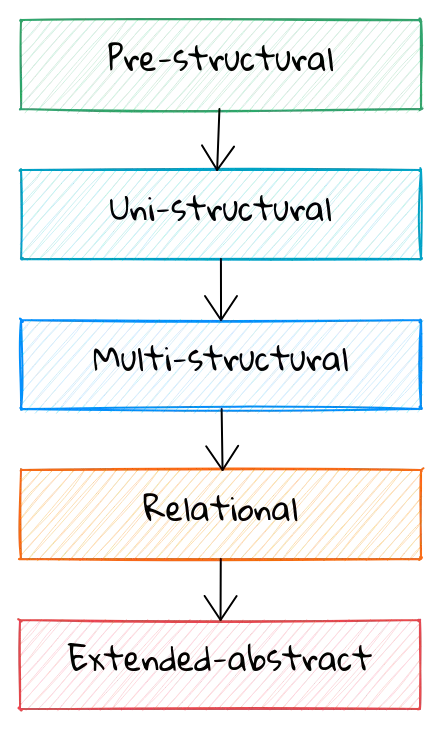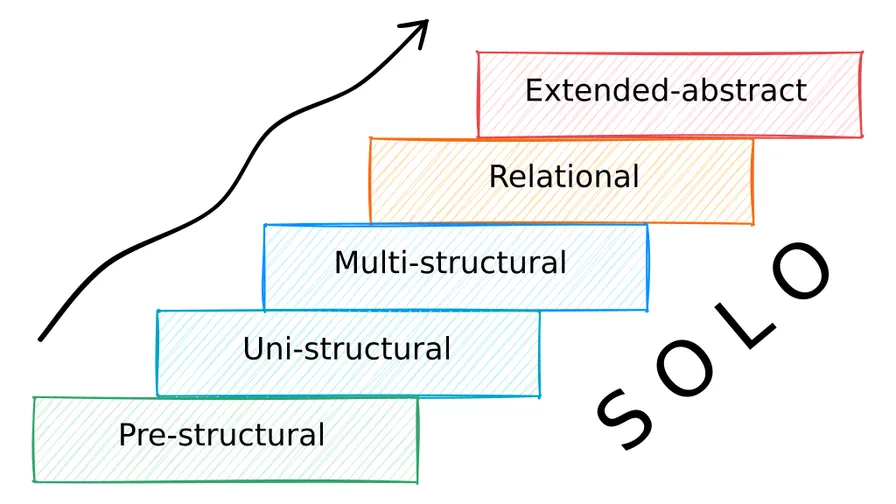How we learn matters because the brain builds understanding step by step. Without structure, new information can overwhelm us or lead to misconceptions. However, with the right scaffolding, each stage supports the next, turning isolated facts into lasting knowledge that can be applied in meaningful ways.
This article explores how the brain learns and how to make that process more effective. It explains why structured learning is important, how deeper understanding develops in stages, and how to apply these insights in practice.
It does not cover other important topics such as motivation, how to make learning engaging, spaced repetition, or broader study strategies. Instead, its focus is on understanding the brain’s learning process and how to work with it, rather than serving as an end-to-end guide to learning.
Disclaimer: This is not a silver bullet formula for learning. Every learner and situation is different, and these ideas might not always apply. Use it as inspiration, reflect critically, and adapt it to improve your own teaching and learning.
Why Learning Without Structure Fails
Have you ever struggled to understand a concept when trying to solve a problem? You might know the correct answer but not fully grasp why.
The brain is naïve and thinks it knows more than it does because your knowledge is unorganized. You might feel you understand something, yet struggle to explain it when faced with a practical problem.
Many learners exist in a “middle ground”, lacking a solid foundation for knowledge while also struggling to understand the reasons behind it. We often rush to understand why without building a foundation first.
Introducing material that’s too complex too early can lead learners to draw false conclusions. Once something is learned incorrectly, it’s much harder to unlearn and replace with the right understanding.
TL;DR: To learn effectively, knowledge should be introduced gradually and matched to the learner’s level of difficulty, so it becomes easier to understand and build on.
How the Brain Builds Knowledge Gradually
To learn effectively, we first need a basic understanding of what we are learning and why it matters. This is called scaffolding. Scaffolding provides a solid foundation for the learner to organize information in their mind and understand not just what happens, but why it happens.
Suppose you’ve never encountered this topic before and you’re given the following fact:
“Plants convert carbon dioxide and water into glucose and oxygen.”
You could memorize this fact, but without context, it’s hard to organize and understand why it happens. Now imagine you’re first told:
“Plants need energy to grow, just like we need food.”
Suddenly, you have something to anchor the information to, and you understand why it matters.
Once learners have a solid foundation and understand both what they are learning and why, you can start introducing single, unconnected facts. At this stage, these facts are easier to absorb because the learner already has a framework to fit them into.
For example, if they understand the basics of photosynthesis, adding facts about chlorophyll, sunlight absorption, or glucose production will make sense immediately, rather than feeling like isolated trivia.
The next step is to help learners connect these facts, creating relationships and forming a broader understanding. By linking the individual pieces of information, learners move from knowing isolated facts to seeing patterns and cause-effect relationships. This relational stage is crucial—it allows learners to reason through problems, explain processes in their own words, and apply knowledge to new scenarios.
For example, they might be able to explain how increasing CO₂ levels could affect plant growth or the broader ecosystem.
The final stage of mastering a topic is creating new material, predicting outcomes, or creatively applying knowledge in real-world contexts. This stage is the most challenging because it requires not only knowing the content but having it organized in a coherent mental model. At this point, learners can innovate, solve complex problems, or transfer their understanding to unfamiliar situations.
For example, they might design an experiment to test photosynthesis under different conditions or predict how changes in sunlight exposure could impact crop yields on Mars.
The SOLO Taxonomy: Stages of Understanding
We can think of the brain’s natural flow of learning as occurring in stages. This is where the Structure of Observed Learning Outcomes (SOLO) comes in. Developed by John Biggs and Kevin Collis in 1982, SOLO describes levels of increasing complexity in a student’s understanding, moving from surface knowledge to deep understanding.
Why SOLO? There are many models for learning, such as the famous Bloom’s Taxonomy. Most share similar principles, but SOLO is focused solely on understanding a subject, is structured, and applies to most forms of learning.


-
Pre-structural – The learner has little or no understanding of the concept and lacks a foundation, often missing the point entirely. This stage reflects having no prior knowledge of the topic.
Example: “Photosynthesis is when plants breathe.”
-
Uni-structural – The learner can identify a single relevant aspect of the topic but shows no deeper understanding or links to other concepts. They can recall facts but cannot develop or connect ideas.
Example: “Plants produce oxygen.”
-
Multi-structural – The learner knows several relevant aspects of the topic but does not yet see how they relate. Like the uni-structural stage, this limits them mainly to recall.
Example: “Plants need sunlight, water, and carbon dioxide to make food.”
-
Relational – The learner connects several aspects of the topic into a coherent understanding. At this stage, they can reason about the subject and answer more complex questions that require integrating multiple ideas.
Example: “Chlorophyll in plants absorbs sunlight, which powers the conversion of water and CO₂ into glucose and oxygen.”
-
Extended Abstract – The learner has gained a comprehensive perspective of the topic and can generalize, transfer, and apply their understanding to new and abstract contexts.
Example: “Photosynthesis drives the food chain, and changes in CO₂ levels can affect ecosystems worldwide. On Mars, plants would need special conditions to survive.”
Why are the stages of SOLO important? Knowing which level a learner is at allows you to tailor the difficulty of teaching or learning to their needs. It’s also valuable to understand how to organize material so it aligns with the brain’s natural learning flow, helping learners progress more effectively.
